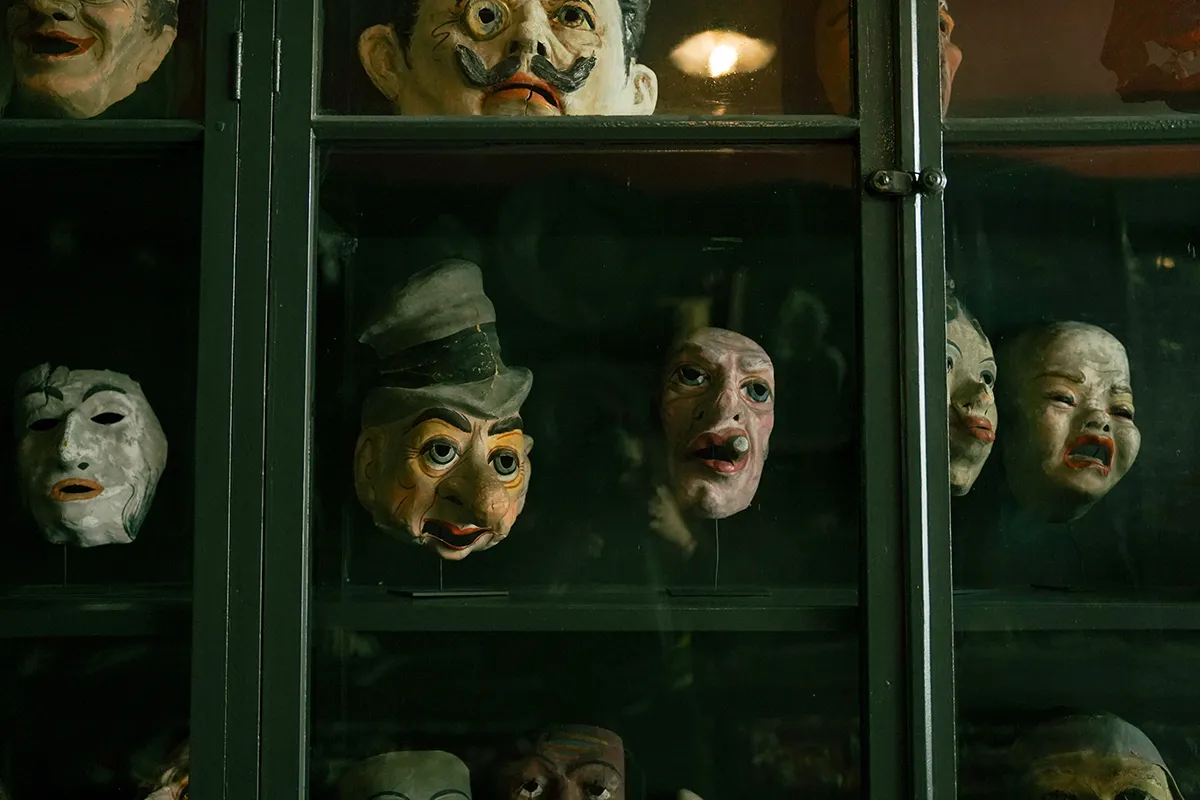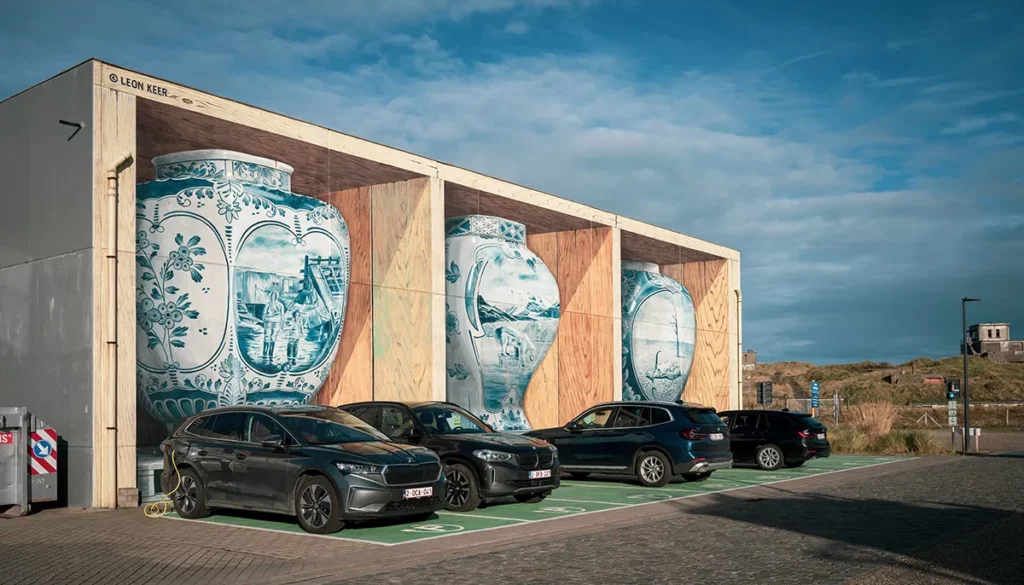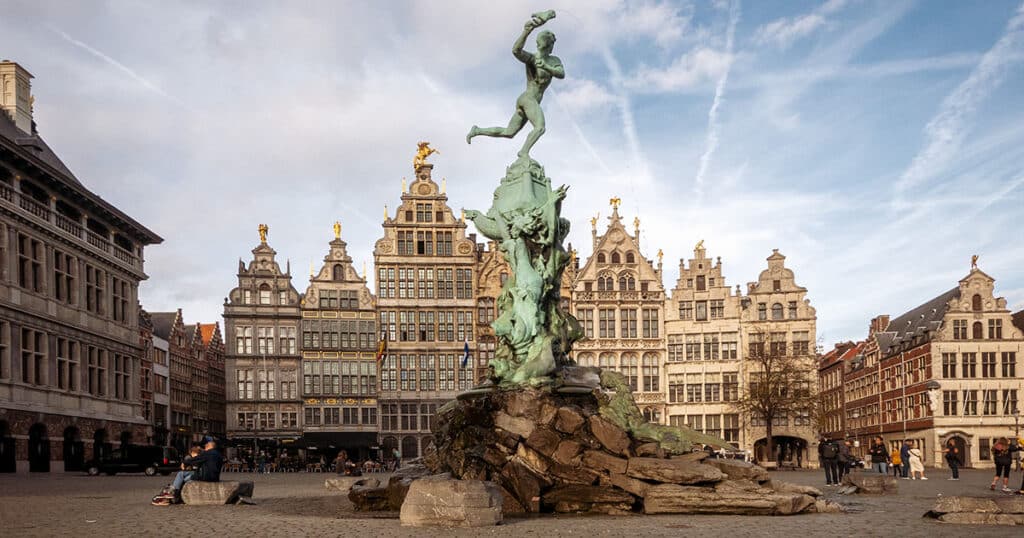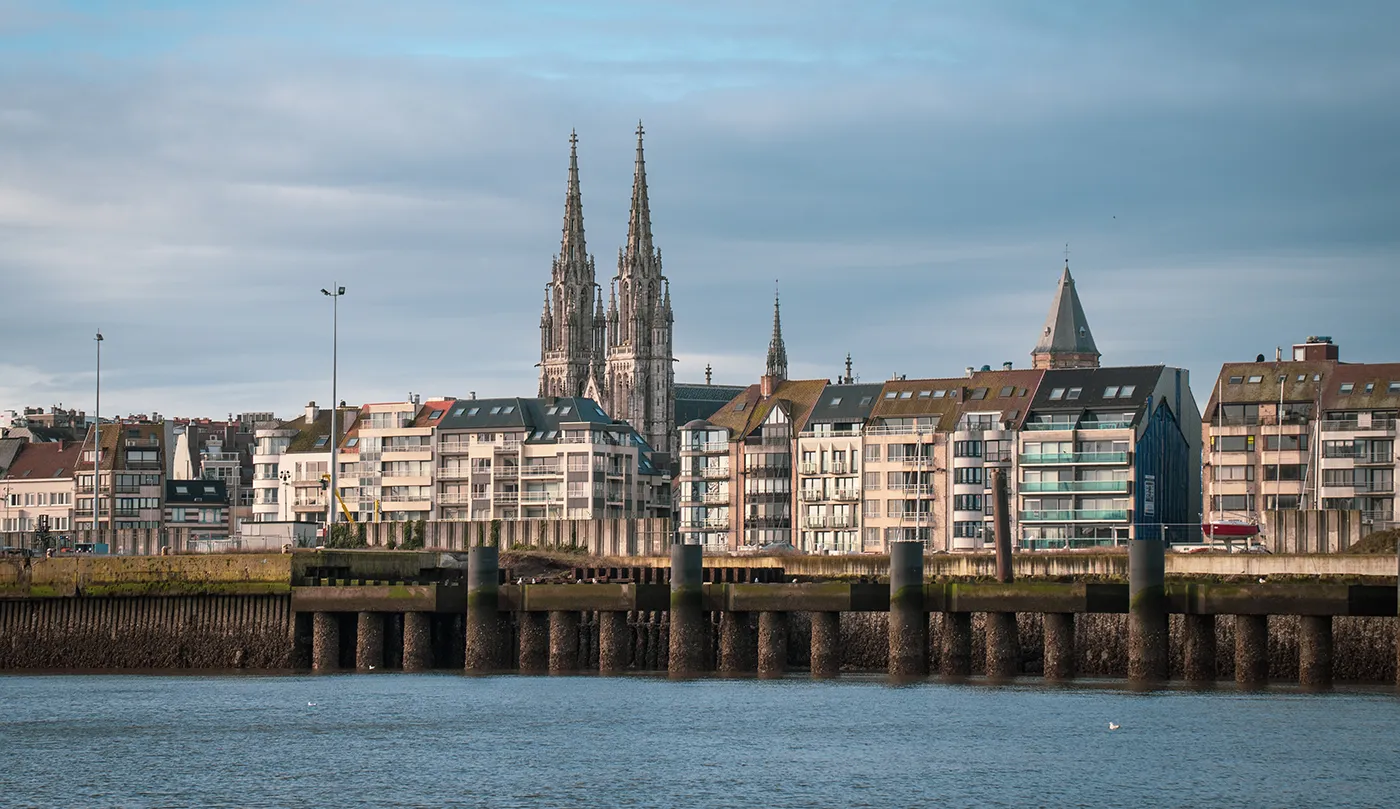In which town can you find a beach, culture and haute cuisine? Ostend, of course! This Belgian town on the Flemish coast is the perfect destination for a cultural, nature and gourmet getaway, easily accessible by train.
What to do in Ostend Where to eat? What are the best addresses? What’s the history of the town? Here’s a travel guide to prepare your stay in Ostend!
This article was produced in collaboration with Visit Flanders. The opinions and suggestions for activities mentioned in this article are therefore entirely sincere.
Summary
Ostend in short

- How do you get there? By train, of course! From France, all you need to do is take the Eurostar (formerly Thalys), which connects Paris to Brussels in 1.5 hours, followed by a connection between Brussels and Ostend that takes around 1 hour 10 minutes. All in all, it takes just 3 hours by train to get from Paris to Ostend.
- How long to stay? Ostend is a great place to discover over a weekend, but to avoid frustration and to have enough time to visit the city properly, it’s best to spend 3 days here, and more if you like!
- Who’s it for? Between its cultural events and its seaside location, Ostend offers a wide range of activities for all ages. It’s a city that lends itself equally well to a getaway with friends, a romantic weekend or a family holiday.
- When should you go? Ideally in fine weather if you want to enjoy the beach, and all year round if you’re more interested in the city’s cultural offerings.
- How do I get around? Ostend is a fairly small town that can be easily explored on foot (allow 20 minutes to cross the center, where the main points of interest are located). If walking isn’t your cup of tea, or if you’d like to get away from the center, there’s a streetcar and bus network. Single tickets cost €2.5 and can be purchased online at www.delijn.be.
- What language should I use to communicate? Ostend is located in the Flemish part of Belgium, where Dutch is the most widely spoken language. However, english is widely spoken, especially in tourist areas (hotels, restaurants, museums…), so it’s easy to find english-speaking contacts.

The history of Ostend
Ostend’s origins date back to Roman times, but it was not until the Middle Ages that it became a major fishing town. Over the centuries, the town has evolved into an important seaport in Northern Europe.
In the 19th century, Ostend became a popular seaside destination, attracting European nobility and high society in search of spa treatments or simply entertainment. As a result, the town experienced a boom in tourism, with the construction of numerous hotels, casinos and promenades along its magnificent sandy beach. With the arrival of paid vacations in 1936, Ostend adapted to mass tourism with the construction of low-cost accommodation.
During the Second World War, Ostend was occupied by German forces and was the target of numerous Allied bombing raids that destroyed much of the town. After the war, Ostend was rebuilt and regained its popularity as a port city and seaside resort.
Today, Ostend is a dynamic city, combining a historic heritage with a modern, cosmopolitan atmosphere.



What to do in Ostend 5 must-sees
Walking along the seafront
As Ostend is a seaside town, it would be a shame not to take advantage of its beach! A pleasant promenade has been laid out along the seafront, which you can either walk along or take a ride on a rented rosalie.




The queen of beaches and the beach of kings
Belgian King Leopold II (1835-1909) had a second home in Ostend. He left his mark on the town by carrying out numerous transformations. He was also responsible for the Venetian galleries, which provide a sheltered place to stroll along the seafront.
Entering James Ensor’s house
The painter James Ensor is probably Ostend’s most famous personality! In recent years, his house has become a museum.
Ensor inherited this house from his uncle in 1917, and occupied it until his death. The first floor of the house was a store selling tourist items such as shells and masks. When James Ensor came to live in the house, he kept the store as it was, like an astonishing cabinet of curiosities.


In addition to the historic apartments where Ensor lived, the house also features an interpretation area presenting a panorama of his work. This is a very interesting visit, particularly suited to a family audience, although there are no original works by Ensor here, only copies. To see some of his paintings, visit the Mu.ZEE (see below) or the KMSKA in Antwerp.


House of James Ensor
Address: Vlaanderenstraat 27, Ostend
Opening hours: daily, except Mondays, from 10 a.m. to 6 p.m.
Admission: €13, free for children under 6, €6 for 6-14 year-olds, €9 for 15-25 year-olds
Website: www.ensorhuis.be/en
Who was James Ensor?
Born in Ostend, James Ensor (1860-1949) is the town’s most famous personality. This atypical painter embraced many artistic currents, making his work unclassifiable. Opposed to academicism, Ensor cut short his training at the Beaux-Arts, which he saw as a “bunch of myopes”.
Ensor painted some 850 canvases over the course of his life, and is known for his many masked figures. He was inspired by the masks in his home store, which he used to enhance the expressiveness of his characters’ faces.
Visit the Mu.ZEE
The Mu.ZEE collection presents an overview of Belgian visual arts from 1860 to the present day. The permanent exhibition features paintings by James Ensor, Léon Spilliart and Constant Permeke.
The Mu.ZEE also presents major temporary exhibitions. As I write this and until April 14, 2014, the exhibition “Rose, rose, rose à mes yeux” is on view, exploring the theme of still life in the work of Ensor and Belgian painters from 1830 to 1930. An opportunity to discover numerous original canvases by Ensor, ¼ of whose work represented still lifes.





Mu.ZEE
Address: Romestraat 11, Ostend
Opening hours: daily, except Mondays, from 10 am to 5:30 pm
Admission: €15, free for under-12s, €3 for 13-25s
Website : https://www.muzee.be/
A little walk in the park…
On your way to Mu.ZEE, stop off at the charming Parc Leopold. It’s small but well laid out, and a very pleasant place to be.
Going to Fort Napoléon
As its name suggests, this fort was built at Napoleon’s request between 1811 and 1814 to protect the Empire from a potential invasion by England. During the First and Second World Wars, it became part of the defensive wall of the German occupation forces.
Left derelict since the end of the war, it was finally restored in 1995 and opened to the public in 2000.
You can visit the fort with the aid of a well-produced audioguide, which recounts the many lives of this monument. Exhibitions are held regularly, and during my visit there was an interactive exhibition on James Ensor, based on the children’s book “Grote Kunst voor Kleine Kenners” (Great Art for Little Connoisseurs).



Fort Napoléon
Address: Vuurtorenweg 13, Ostend
Opening hours: daily except Mondays, 10 am to 6 pm
Admission: €9, free for children under 6, €7 for children aged 6-12
Website: www.fort-napoleon.be/en
On board, matey!
To get to Fort Napoléon from downtown Ostend, you’ll need to take a free ferry. The crossing of the harbor takes only 3 minutes, but is very pleasant!

Discover the city by following “The Crystal Ship” street art trail
Ostend is a city renowned for its street art. Every year, a dozen internationally renowned artists visit the town. Dozens of works cover certain buildings, turning Ostend into an open-air museum!
You can discover these works by following the “Crystal ship” route using the free downloadable map (or pick up at the tourist office) or the “Street Art Oostende” mobile app.




Good addresses in Ostend
Where to eat in Ostend
Here are a few tried-and-tested places to treat yourself in Ostend!
ZAZ Cuisine – €€€
This Italian restaurant is a marvel! The dishes are excellent, original and very well presented. The decor is cosy and warm. The waiters know how to make you feel at ease while remaining very professional. In short, this is my favorite restaurant in Ostend!



ZAZ Cuisine
Address : Van Iseghemlaan 16, Ostend
Site internet : https://www.zazcuisine.be/
Lusitania – €€€
Lusitania is a gourmet restaurant located next to the port. The chef’s 3-course (€52) or 5-course (€65) menu offers an attractive range of flavors. A fine wine list accompanies the dishes.



Please note: service is rather slow, and you should allow 3h30 for the 5-course menu. I therefore recommend this restaurant for dinner.
Lusitania
Address: Visserskaai 35, Ostend
Website: https: //restaurant-lusitania.be/
Bistro Mathilda – €€€€
Another fine gastronomic address is this restaurant near the Casino-Kursaal, one of the best brasseries in Ostend. The 3-course discovery menu costs €61, while the 4-course menu costs €76.
If possible, ask for a table upstairs, near the windows, to enjoy a view of Parc Léopold.


Please note: like the Lusitania, service is slow, so it’s best to go for dinner.
Bistro Mathilda
Address: Leopold II-Iaan 1, Ostend
Website: https: //www.bistromathilda.be/
Where to stay? Find a hotel in Ostend
During my stay, I put my bags down at theUpstairs hotel, just 30 seconds from the seafront! It’s a modern establishment with a feel-good industrial decor. Throughout the hotel, you’ll find numerous inscriptions to put a smile on your face! There’s even a slide, pool table and table soccer.
The rooms are spacious, quiet and comfortable, and the buffet breakfast is very generous.

Many other hotels are available in Ostend. Enter the dates of your stay below to see the available establishments and their rates:
The above links are affiliate links, meaning that I earn a commission if you book your hotel after clicking on them. It doesn’t cost you anything extra, but it helps me to develop Culturez-vous. Thank you! ☺️
Interactive map
All the addresses mentioned in this article can be found on this map:
Other towns to discover around Ostend
Continue your stay and discover the rest of Flanders:
Antwerp

Bruges

Mechelen

Enjoy your trip!
Article produced in collaboration with Visit Flanders. Many thanks to the Visit Flanders and Visit Ostend teams for their invitation.
Unless otherwise stated, the photographs illustrating this article are the property of Culturez-vous and may not be reused without permission.





No Comments
Leave a comment Cancel